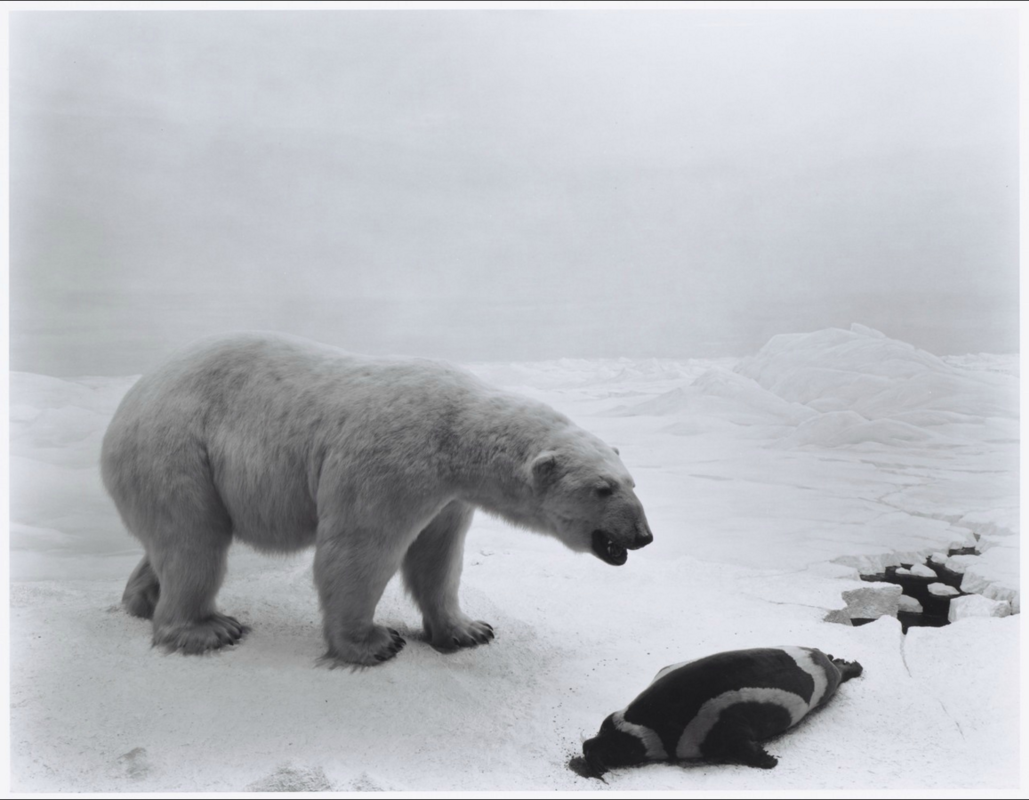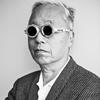More about Polar Bear

Sr. Contributor
When it comes to picking valid subjects for art photography, Hiroshi Sugimoto likes to get real weird with it.
You can almost hear the Discovery Channel voiceover narrating this gruesome scene of the circle of life. “The mother polar bear, desperate to feed her young, pauses to appreciate her fresh kill. She and her cubs will surely be enjoying penguin tonight!” You might be wondering how a photographer escaped this brush with Mother Nature unscathed. Who in their right mind would get that close to a polar bear? Certainly not me...but neither did the photographer. Unlike nature photographers like Ansel Adams, Sugimoto didn’t bother going directly to the source.
At first glance, this photograph appears to be an artist’s attempt to be an adventurous explorer à la Steve Irwin, but upon closer inspection, everything looks a little bit too perfect. The polar bear’s pose and the unbearably perfect composition of the photograph seem too good to be true. Also, that polar bear’s eyebrow has a better arch than mine, and I didn’t even know polar bears had eyebrows in the first place. The reality of the photograph breaks down when you realize just how Sugimoto captured this image. After moving to New York City in 1974, Sugimoto did not have to travel far to experience the arctic landscape and the enthralling wildlife that he features in this photograph. Like any good tourist who first arrives in New York, Sugimoto set out to explore the cultural wonders that the city has to offer. Just across Central Park, a short walk from The Metropolitan Museum of Art, is another of New York’s many bastions of culture. The American Museum of Natural History would prove to be an unlikely source of inspiration for the young artist. At this museum, dioramas line long halls to recreate various scenes from all types of ecosystems and explain the mysteries of the natural world to native New Yorkers and tourists like Sugimoto alike.
Growing up in New York, I visited the Museum of Natural History a lot, so maybe I’m a bit jaded. After the age of twelve my pre-teen angst must have kicked in because I no longer believed in the magic of these dioramas. Visiting in his mid-twenties, Sugimoto wasn’t necessarily fooled by the dioramas either. He describes his encounter with the dioramas as a sort of optical illusion – that if you closed one eye and looked quickly, these dioramas actually did appear to be real.
Sugimoto set out to create photographs that heightened the dioramas’ illusions and made permanent the effects of looking at them quickly with one eye closed. This 1976 photograph was the beginning of a project that has continued for more than forty years, and later photographs in the Diorama series become progressively more lifelike. The idea to use subjects that mimicked reality spurred another project, in which Sugimoto created even weirder likenesses of reality by photographing wax recreations of historical figures. Sugimoto’s photographs are as intriguing as they are confusing. He cleverly uses photographs, which are supposed to be objective documents that convey truth, to blur the very concept of reality and emphasize the role that images play in our understanding of this reality. It sounds like Sugimoto took a page out of Rene Magritte’s book on the total kerfuffle of reality for the purpose of Art.
Sources
- Coppelman, Alyssa. “Eerie Yet Gorgeous Scenes Make Taxidermy Spring to Life.” Wired. January 13, 2015. https://www.wired.com/2015/01/hiroshi-sugimoto-dioramas/#slide-7. Accessed April 3, 2017.
- Sugimoto, Hiroshi. Hiroshi Sugimoto. http://www.sugimotohiroshi.com/. Accessed April 3, 2017.
- J. Paul Getty Trust. “Hiroshi Sugimoto: Past Tense.” http://www.getty.edu/art/exhibitions/sugimoto/. Accessed April 3, 2017.











